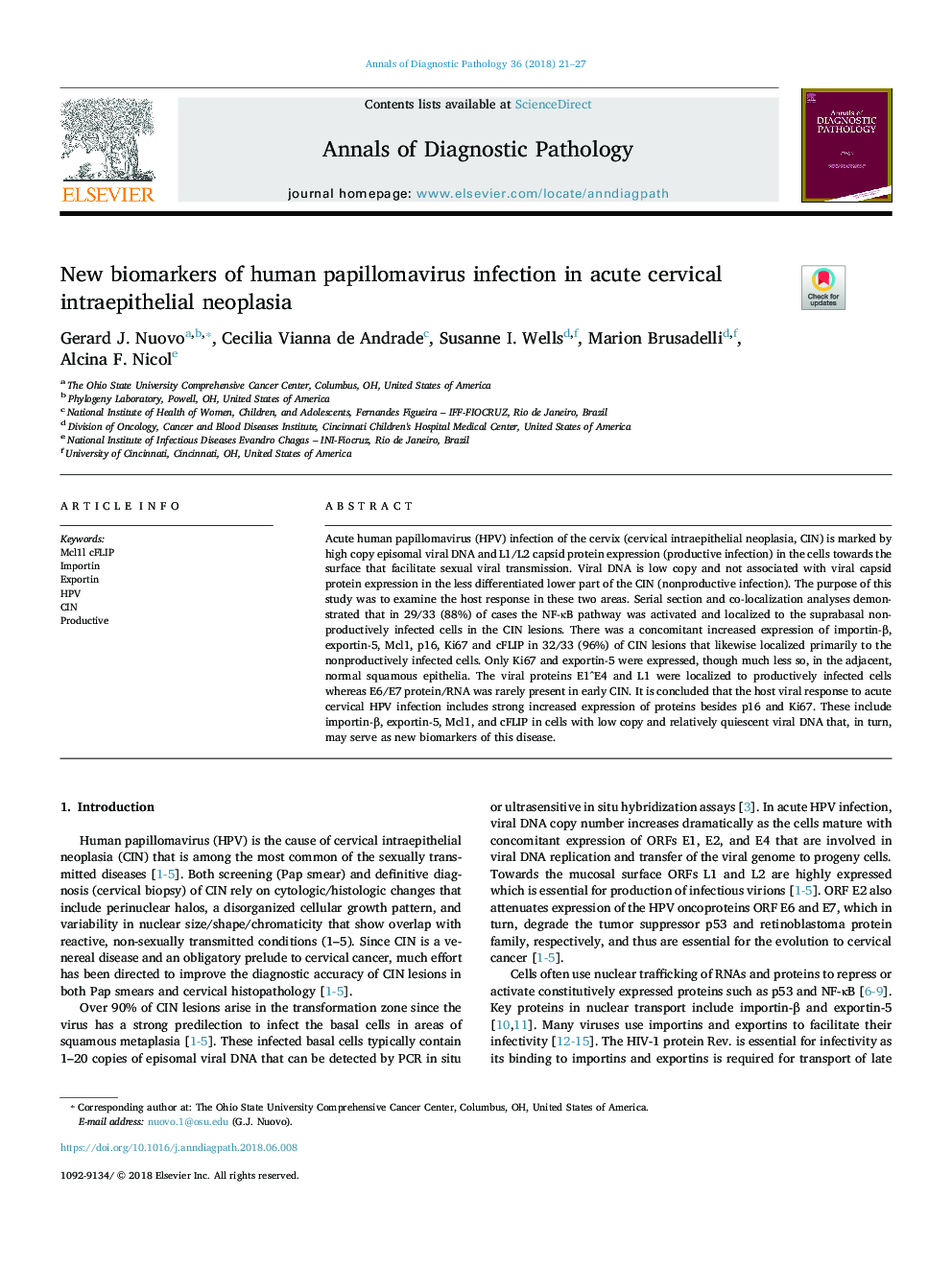| Article ID | Journal | Published Year | Pages | File Type |
|---|---|---|---|---|
| 8807150 | Annals of Diagnostic Pathology | 2018 | 7 Pages |
Abstract
Acute human papillomavirus (HPV) infection of the cervix (cervical intraepithelial neoplasia, CIN) is marked by high copy episomal viral DNA and L1/L2 capsid protein expression (productive infection) in the cells towards the surface that facilitate sexual viral transmission. Viral DNA is low copy and not associated with viral capsid protein expression in the less differentiated lower part of the CIN (nonproductive infection). The purpose of this study was to examine the host response in these two areas. Serial section and co-localization analyses demonstrated that in 29/33 (88%) of cases the NF-κB pathway was activated and localized to the suprabasal nonproductively infected cells in the CIN lesions. There was a concomitant increased expression of importin-β, exportin-5, Mcl1, p16, Ki67 and cFLIP in 32/33 (96%) of CIN lesions that likewise localized primarily to the nonproductively infected cells. Only Ki67 and exportin-5 were expressed, though much less so, in the adjacent, normal squamous epithelia. The viral proteins E1^E4 and L1 were localized to productively infected cells whereas E6/E7 protein/RNA was rarely present in early CIN. It is concluded that the host viral response to acute cervical HPV infection includes strong increased expression of proteins besides p16 and Ki67. These include importin-β, exportin-5, Mcl1, and cFLIP in cells with low copy and relatively quiescent viral DNA that, in turn, may serve as new biomarkers of this disease.
Keywords
Related Topics
Health Sciences
Medicine and Dentistry
Pathology and Medical Technology
Authors
Gerard J. Nuovo, Cecilia Vianna de Andrade, Susanne I. Wells, Marion Brusadelli, Alcina F. Nicol,
